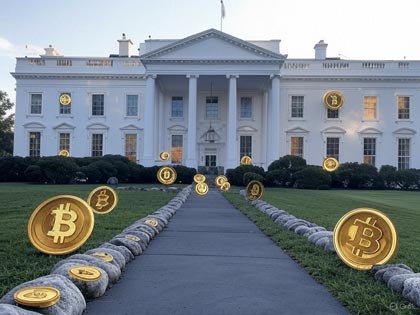Trump Executive Order Launches Strategic Bitcoin Reserve and Digital Asset Stockpile
Trump Executive Order Launches Strategic Bitcoin Reserve and Digital Asset Stockpile
March 7, 2025
On March 6, 2025, President Donald J. Trump signed a groundbreaking executive order titled “Establishment of the Strategic Bitcoin Reserve and United States Digital Asset Stockpile,” marking a pivotal shift in U.S. policy toward cryptocurrencies. This move, enacted just days into his second term, fulfills a campaign promise to position the United States as the “crypto capital of the world” and reflects a bold embrace of digital assets as a cornerstone of national economic strategy. The order establishes two distinct initiatives: a Strategic Bitcoin Reserve (SBR) and a U.S. Digital Asset Stockpile, leveraging assets already held by the federal government to assert American leadership in the rapidly evolving digital finance landscape.

Strategic Bitcoin Reserve
The Strategic Bitcoin Reserve is the centerpiece of the executive order. It designates bitcoin (BTC) as a reserve asset, akin to a “digital Fort Knox,” and capitalizes it with approximately 200,000 BTC currently held by the U.S. Department of the Treasury, seized through criminal and civil forfeiture proceedings. Valued at roughly $17 billion as of early March 2025, this stash represents a significant portion of the total bitcoin supply, which is capped at 21 million coins.
The order mandates that these assets remain unsold, treating bitcoin as a long-term store of value rather than a liquid resource for immediate fiscal needs. This decision aligns with the views of cryptocurrency advocates who liken bitcoin to “digital gold” due to its scarcity and security, positioning the U.S. as a pioneer among nations in recognizing its strategic importance.
U.S. Digital Asset Stockpile
Complementing the SBR, the U.S. Digital Asset Stockpile will serve as a repository for other cryptocurrencies seized by federal agencies. Unlike the bitcoin reserve, the stockpile will not involve active government purchases but will instead consolidate non-bitcoin digital assets, such as Ethereum, XRP, Solana, and Cardano, acquired through law enforcement actions. This distinction underscores a deliberate policy focus on bitcoin as the primary reserve asset while still acknowledging the broader ecosystem of digital currencies. The Treasury Department is tasked with managing both initiatives, ensuring budget-neutral operations that impose no additional costs on taxpayers—a point emphasized by White House AI and Crypto Czar David Sacks in public statements following the order’s signing.
Seized Cryptocurrencies
The executive order addresses a long-standing issue of disjointed federal handling of seized cryptocurrencies. Historically, agencies like the Department of Justice and the U.S. Marshals Service have auctioned off forfeited digital assets, often at a discount, leading to an estimated $17 billion in lost value for taxpayers. By centralizing ownership and prohibiting sales, the SBR aims to maximize the strategic and financial potential of these holdings. The order also directs the Secretaries of Treasury and Commerce to explore budget-neutral strategies for acquiring additional bitcoin, signaling a proactive approach to expanding the reserve without burdening public finances.
Timing and Reception of the Executive Order
This policy shift has sparked both enthusiasm and debate. Proponents, including Senator Cynthia Lummis (R-Wyo.), hail it as a transformative step toward making America the global leader in digital finance.
Critics, however, question the implications of the government becoming a major player in the volatile cryptocurrency market. Some industry voices expressed disappointment that the order relies solely on existing seized assets rather than committing to new purchases, which could have further driven bitcoin’s price—currently hovering around $86,000 after a brief dip following the announcement.
The timing of the order, just ahead of a White House crypto summit on March 7, 2025, underscores its political and economic significance. Attended by industry leaders, the summit is expected to shape further policy details, including custody and audit protocols for the reserves.
For now, the executive order represents a philosophical pivot from the Biden administration’s cautious stance on digital assets toward a pro-innovation framework championed by Trump. Whether this “digital Fort Knox” heralds a new era of financial resilience or introduces unforeseen risks remains to be seen, but it undeniably positions the U.S. at the forefront of the global cryptocurrency race.
The article “Trump Executive Order Launches Strategic Bitcoin Reserve and Digital Asset Stockpile” first appeared on DigitalAsset.Law on March 7, 2025.
Return to Home